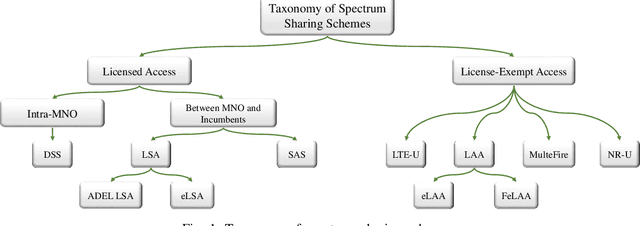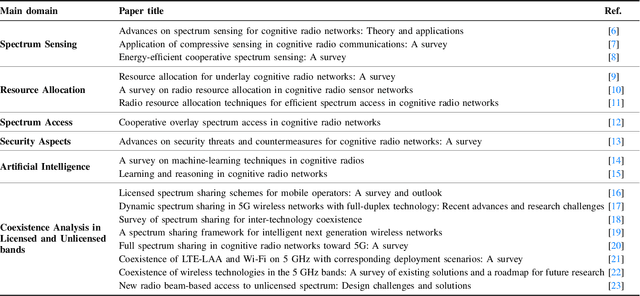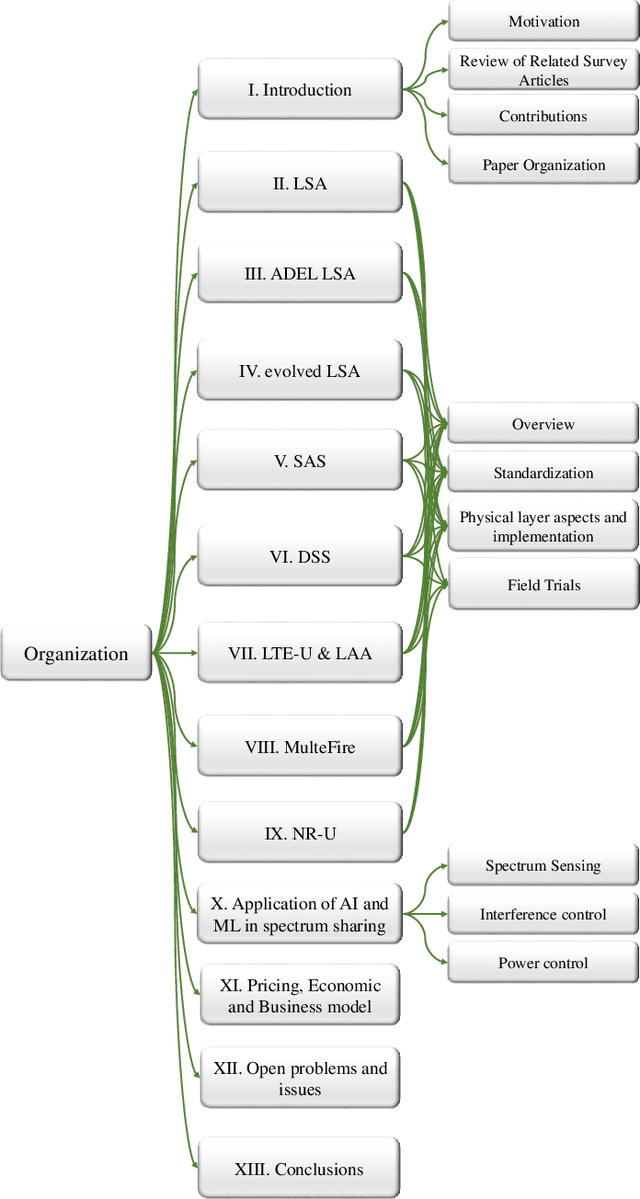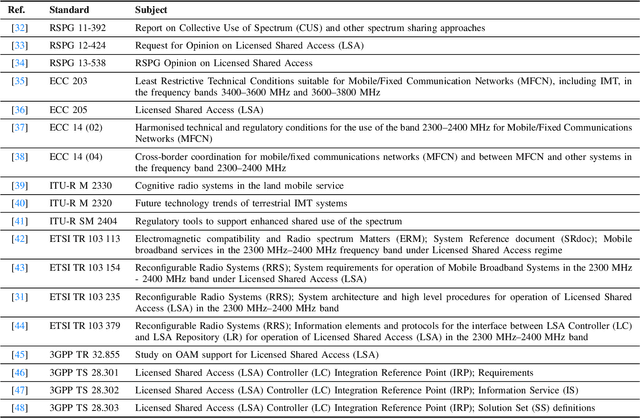Amir Hossein Zarif
A Comprehensive Survey of Spectrum Sharing Schemes from a Standardization and Implementation Perspective
Mar 21, 2022



Abstract:As the services and requirements of next-generation wireless networks become increasingly diversified, it is estimated that the current frequency bands of mobile network operators (MNOs) will be unable to cope with the immensity of anticipated demands. Due to spectrum scarcity, there has been a growing trend among stakeholders toward identifying practical solutions to make the most productive use of the exclusively allocated bands on a shared basis through spectrum sharing mechanisms. However, due to the technical complexities of these mechanisms, their design presents challenges, as it requires coordination among multiple entities. To address this challenge, in this paper, we begin with a detailed review of the recent literature on spectrum sharing methods, classifying them on the basis of their operational frequency regime that is, whether they are implemented to operate in licensed bands (e.g., licensed shared access (LSA), spectrum access system (SAS), and dynamic spectrum sharing (DSS)) or unlicensed bands (e.g., LTE-unlicensed (LTE-U), licensed assisted access (LAA), MulteFire, and new radio-unlicensed (NR-U)). Then, in order to narrow the gap between the standardization and vendor-specific implementations, we provide a detailed review of the potential implementation scenarios and necessary amendments to legacy cellular networks from the perspective of telecom vendors and regulatory bodies. Next, we analyze applications of artificial intelligence (AI) and machine learning (ML) techniques for facilitating spectrum sharing mechanisms and leveraging the full potential of autonomous sharing scenarios. Finally, we conclude the paper by presenting open research challenges, which aim to provide insights into prospective research endeavors.
 Add to Chrome
Add to Chrome Add to Firefox
Add to Firefox Add to Edge
Add to Edge